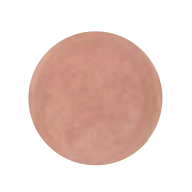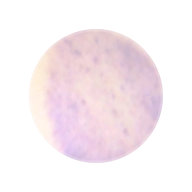Cupping
Remove "heat" and pull out the toxins that linger in your body's tissues.
Add On: $25.70 ($28.01 w/GST)
Rooted in traditional Chinese medicine (TCM) practices, Cupping therapy involves creating a vacuum suction that firmly adheres the cups to the skin, gently stretching nerves, muscles, and blood vessels. The suction effect is designed to draw fluid into the targeted area, resulting in temporary discoloration caused by broken blood vessels just beneath the skin, resembling a bruise.
While historically prevalent in Egyptian, Chinese, and Middle Eastern cultures for thousands of years, cupping has gained global popularity, with increasing adoption by individuals worldwide in recent years.
Many individuals prefer to use cupping for a quick pain relief, inflammation reduction, and the enhancement of relaxation and overall well-being.
Special Note for Cupping
After a cupping session, it’s normal to observe temporary red marks, light bruises, or swelling, which typically clear within 2 to 7 days.
These post-cupping effects are part of the healing process, triggering the body auto-response for improved blood circulation, strengthened immune function, and accelerated toxin elimination.
However, if you have upcoming events where your back will be exposed, it’s advisable to avoid cupping beforehand.
Additionally, it’s recommended to refrain from direct air conditioning or fan exposure on your treated area immediately after cupping and wait for approximately 5 hours before taking a shower.
Cupping offers diverse advantages, including but not limited to below:
- Enhance circulation and calm the nervous system.
- Remove “heat” and pull out the toxins that linger in your body’s tissues.
- Loosen tight or tensed muscles and help to relieve pain.
While cupping is applied onto specific acupressure points for treating specific conditions, did you also know that it is also used for diagnosis?
By observing the colour, intensity, and markings left on the skin after a session, practitioners can analyse these factors to gain insights into the individual’s health, and identifying areas of concern or imbalance based on traditional principles of cupping therapy.

Slight redness or pinkish color: Good blood circulation.

Blister: Excessive dampness.

Greyish White: Weak body, insufficient Qi and blood in the body.

Bright Red: Indicates heatiness in the area.

Dark Red/ Purple: Poor blood circulation.
- A purplish color indicates severe qi stagnation.
- A dark red color indicates severe blood stasis.
Most people should be able to tolerate Cupping well. However, if you have any of the listed conditions below, it is best to avoid cupping and consult a medical professional prior to cupping treatment.
- open wound
- sensitive skin
- pregnancy
- patients with blood disorders
- Varicose veins
- Active acne
- Diabetic
- Recent operation
In addition, at Healing Touch, we recommend cupping to be done at most once a week to let body fully heal and recover and for each session to be 10 minutes or less.
Rooted in traditional Chinese medicine (TCM) practices, Cupping therapy involves creating a vacuum suction that firmly adheres the cups to the skin, gently stretching nerves, muscles, and blood vessels. The suction effect is designed to draw fluid into the targeted area, resulting in temporary discoloration caused by broken blood vessels just beneath the skin, resembling a bruise.
While historically prevalent in Egyptian, Chinese, and Middle Eastern cultures for thousands of years, cupping has gained global popularity, with increasing adoption by individuals worldwide in recent years.
Many individuals prefer to use cupping for a quick pain relief, inflammation reduction, and the enhancement of relaxation and overall well-being.
Special Note for Cupping
After a cupping session, it’s normal to observe temporary red marks, light bruises, or swelling, which typically clear within 2 to 7 days.
These post-cupping effects are part of the healing process, triggering the body auto-response for improved blood circulation, strengthened immune function, and accelerated toxin elimination.
However, if you have upcoming events where your back will be exposed, it’s advisable to avoid cupping beforehand.
Additionally, it’s recommended to refrain from direct air conditioning or fan exposure on your treated area immediately after cupping and wait for approximately 5 hours before taking a shower.
Cupping offers diverse advantages, including but not limited to below:
- Enhance circulation and calm the nervous system.
- Remove “heat” and pull out the toxins that linger in your body’s tissues.
- Loosen tight or tensed muscles and help to relieve pain.
While cupping is applied onto specific acupressure points for treating specific conditions, did you also know that it is also used for diagnosis?
By observing the colour, intensity, and markings left on the skin after a session, practitioners can analyse these factors to gain insights into the individual’s health, and identifying areas of concern or imbalance based on traditional principles of cupping therapy.

Slight redness or pinkish color
Good blood circulation

Blister
Excessive dampness

Greyish White
Weak body, insufficient Qi and blood in the body

Bright Red
Indicates heatiness in the area

Dark Red/Purple
- Poor blood circulation.
- A purplish color indicates severe qi stagnation.
- A dark red color indicates severe blood stasis.
Most people should be able to tolerate Cupping well. However, if you have any of the listed conditions below, it is best to avoid cupping and consult a medical professional prior to cupping treatment.
- Open wound
- Sensitive skin
- Pregnancy
- patients with blood disorders
- Varicose veins
- Active acne
- Diabetic
- Recent operation
In addition, at Healing Touch, we recommend cupping to be done at most once a week to let body fully heal and recover and for each session to be 10 minutes or less.